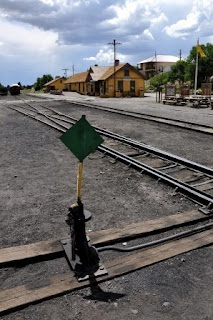As a subsidiary of the Nevada Consolidated mining company, the primary purpose of the Nevada Northern throughout its history was the haulage of copper ores and products. Other freight traffic was also carried, however, and the railroad operated a daily passenger train between East Ely and Cobre until 1941. Local trains were also operated from Ely to Ruth and McGill for the benefit of mine employees and others until the 1930s.
Faced with declining ore reserves and low copper prices, Kennecott closed its Ruth-area mines in May 1978, thus ending the ore trains between Ruth and the McGill smelter. The smelter itself closed on June 20, 1983, and the Nevada Northern suspended all operations immediately thereafter.
In a series of donations beginning in 1986, Kennecott Copper Corporation transferred the entire Ore Line, as well as the railroad's yard and shop facilities in East Ely, to the White Pine Historical Railroad Foundation, a non-profit organization which today operates the property as the Nevada Northern Railway Museum.
In summer, there are daily trains between East Ely and the former mine, and between East Ely and the former smelter.
The main line to Cobre still exists, but is not used any more. There were revivals of mining at McGill, and several plans of building power stations north of Ely, which would bring new traffic to the line.
http://en.wikipedia.org/wiki/Nevada_Northern_Railway
In East Ely, the depot and the machine shops, engine shed, coaling towers and other buildings are preserved in the original state.
It is a real travel back in time to walk around here. In the engine shed, even the toilets, showers and lockers are preserved.
Engine 40 in the shop in East Ely

























